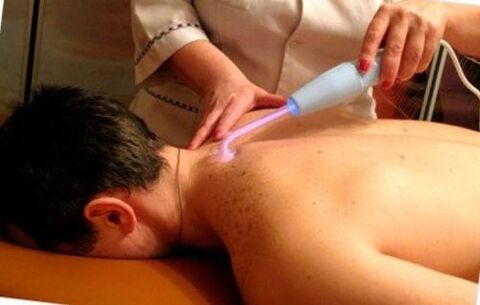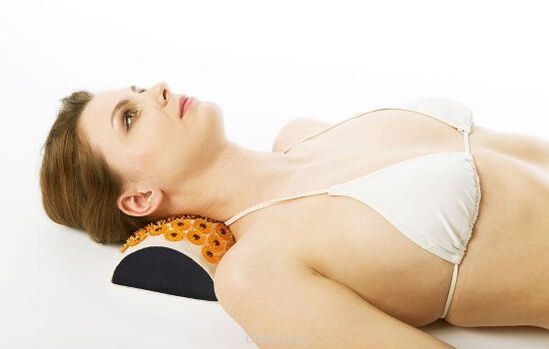
Characteristics and development stages
- In the initial stages of development, there are almost no obvious symptoms, and only after severe loading or prolonged maintenance of a static position will the neck muscles feel severe fatigue and discomfort;
- The second stage is characterized by changes in the structure of the discs - they begin to flatten and sag, causing spinal instability. Pain syndrome during exercise is caused by the reduction in intervertebral disc height and compression of nerve roots;
- In the third stage, a herniation forms, which precedes the intervertebral hernia. The nucleus pulposus gradually moves and begins to protrude beyond the anatomical boundaries. The pain syndrome extends not only to the neck but also to the entire collar area and to the upper limbs due to pinched nerve endings or spinal cord. Headaches and dizziness are caused by constriction of blood vessels;
- The fourth stage of cervical osteochondrosis is characterized by disc destruction and bone growth - the formation of osteophytes. The pain is constant, movement is limited, and muscles become weak until they atrophy. Symptoms become severe: loss of coordination, decreased vision and hearing acuity are observed. At this stage, cervical osteochondrosis cannot be cured, and surgery can only be used.
Treatment principles and methods
- Muscle relaxants;
- B vitamins;
- chondroprotectant;
- Vasodilators (vasodilators);
- diuretics (diuretics);
- Means for improving blood circulation and blood rheological properties.
normalizes blood circulation
Eliminate muscle spasms
chondroprotectant
Chondroprotectants contain various combinations of chondroitin sulfate, glucosamine, and hyaluronic acid. After taking it, your own chondroitin production is activated, cartilage tissue becomes denser, and spinal mobility is restored.
physiotherapy
- Electrophoresis, which allows drugs to be delivered directly to the affected area;
- ultrasound;
- magnet therapy;
- Darsenvar;
- laser.

- Increase blood circulation;
- Lower pain sensitivity threshold;
- Improve nervous system function;
- normalization of vascular tone;
- Increase the body's defense capabilities.
The healing power of massage

Orthopedic instruments
- The ideal shape for patients with osteochondrosis is a rectangular shape. Long pillows and square pillows can be used for short rests, but sleeping on them is not recommended;
- The height must be at least 5 cm but not exceed 10 cm;
- Width – Slightly wider than the sleeper’s shoulders;
- Hardness – Medium. Pillows that are too soft or too hard are not suitable. In addition, orthopedic products mainly produce products with medium hardness.















































